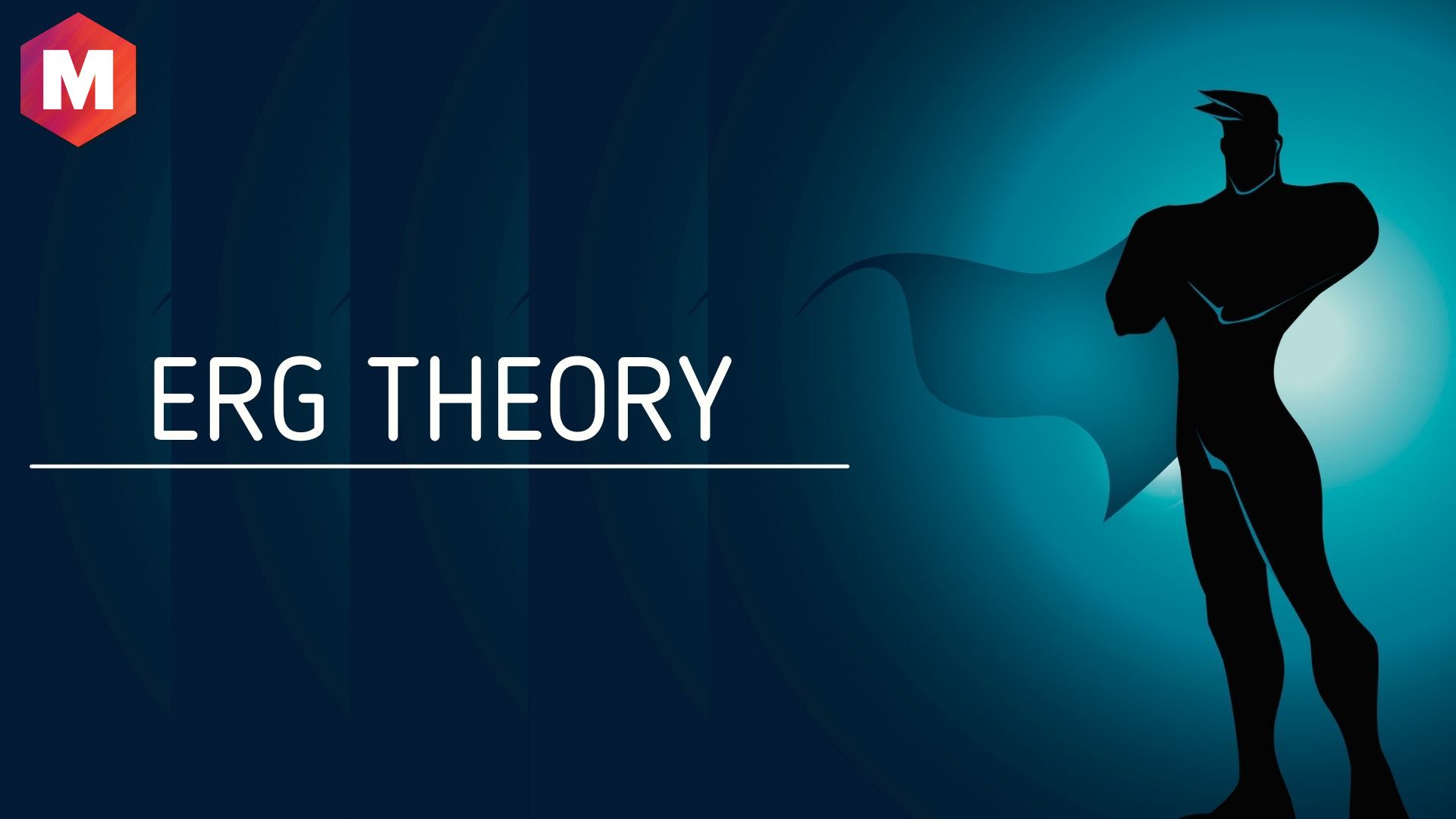
What are the Different Types of Motivation Theories and Their Implications?

ERG Theory of motivation describes how people are motivated by three needs: Existence, Relatedness, and Growth This theory highlights the Frustration-Regression Principle and differs from Maslow's theory in that it acknowledges multiple needs, both high and low-level, and is more flexible ERG Theory has managerial implications for each need and is a valuable tool for understanding motivation
The ERG Theory of motivation posits that individuals are driven by three fundamental needs: existence, relatedness, and growth. Developed by Clayton Paul Alderfer, an American psychologist, during the 1960s and 1970s, this theory suggests that as soon as one need is satisfied, individuals become motivated to fulfill the other two needs. In an organizational setting, every employee strives to satisfy these three needs simultaneously, albeit one at a time, to feel motivated.
What does the ERG Theory mean?
The ERG theory of motivation is about fulfilling a need at a time. The hierarchy of needs is existence, relatedness, and growth and this is explained as
1. Existence (E)
According to Alderfer's ERG Theory of motivation, existence needs encompass both physical safety and psychological survival needs. These needs include access to basic necessities such as shelter, water, food, good health, and a sense of security. The existence needs category emphasizes that if these fundamental material requirements are not fulfilled, higher-level needs cannot be prioritized.
If a person is experiencing hunger, their main focus would be to satisfy that hunger, even if it means neglecting other important needs. The desire for food would take precedence, and only once it is fulfilled, can the person move on to addressing other needs.
2. Relatedness (R)
People have a natural inclination to form social connections and cultivate interpersonal relationships, known as relatedness needs. This category encompasses the desire for positive interactions with family, friends, colleagues, and authority figures, as well as a desire for recognition and acclaim. The satisfaction and happiness that individuals derive from life are largely dependent on their ability to establish meaningful relationships with others. Alderfer's ERG Theory of motivation considers relatedness needs as secondary to survival or existence needs, although they still play a crucial role in shaping our behavior and desires.
3. Growth (G)
Growth needs in motivation theory are centered around an individual's desire for personal development and exploration of their potential. This aligns with Maslow's esteem and self-actualization needs, which highlight the importance of fulfilling one's full potential. Meaningful and creative work is crucial for individuals to fulfill their growth needs, as repetitive tasks do not provide the necessary stimulation. In an organizational setting, providing challenging and interesting opportunities for growth can greatly increase employee motivation.
Frustration-Regression Principle
When an individual is unable to fulfill their higher-level needs, Alderfer's ERG Theory of motivation suggests that they may regress and seek to fulfill their lower-level needs instead. This concept is known as the Frustration-Regression Principle. For instance, if an employee feels that there are no growth opportunities in their current organization, they may become demotivated and frustrated over time. As a result, they may turn to fulfilling their relatedness needs by increasing their interactions with other team members. If they are still unable to satisfy their relatedness needs, they may then attempt to fulfill their Existence needs. As their frustration level continues to rise, their regression may become more pronounced.
What is the difference between Maslow and ERG Theory?
The ERG Theory of motivation, developed by American psychologist Alderfer, draws inspiration from Maslow's hierarchy of needs. Despite sharing some similarities, there are also significant differences between the two theories. In this article, we will explore these differences in detail.
One Need vs Multiple Needs
While Maslow's hierarchy of needs suggests that human needs can be fulfilled at multiple levels simultaneously, Alderfer's ERG Theory of motivation proposes that needs can be satisfied one at a time.
Higher-Level Needs vs Lower-Level Needs
Clayton Paul Alderfer's ERG Theory proposes that unfulfilled higher-level needs can lead to an increased desire to fulfill lower-level needs. In contrast, Maslow's Theory suggests that individuals will remain at a specific need level until that need has been satisfied.
Flexibility vs Rigid
Alderfer's ERG Theory of motivation offers more flexibility in terms of needs perception, as they are seen as a range rather than being strictly placed in a hierarchy. In comparison, Maslow's Need Hierarchy Theory is more rigid, as it requires needs to follow a specific hierarchical order.
Managerial Implications of ERG Theory
To effectively apply the ERG Theory of motivation in the workplace, managers should ensure that all its elements are promoted concurrently. Single-minded focus on just one or two aspects may lead to reduced motivation levels. The ultimate goal is to motivate employees and prevent the onset of the Frustration and Regression Principle.
1. Existence
Ensuring the safety of employees in the workplace is crucial to their overall well-being and productivity. When employees feel secure in their environment, they are able to fully focus on their work and contribute to the success of the company. Thus, it is important for employers to prioritize the safety needs of their staff in order to maintain a positive and productive work environment.
2. Relatedness
Establishing and maintaining positive relationships with colleagues, peers, and superiors is crucial for employees to reach their full potential in the workplace. When these connections are lacking, work performance levels may suffer, leading to frustration and potential regression. In some cases, employees may even prioritize leaving work early to prioritize their personal relationships outside of the workplace.
3. Growth
Finding growth opportunities is essential for every employee as it provides motivation to perform better. When an employee has been in the same position and salary for a prolonged period, it may hinder their drive to go the extra mile. However, when an employee receives recognition and praise for their hard work, it encourages them to put in the extra effort and excel in their role.
Here is a video byon ERG Theory.
Conclusion
Alderfer's ERG Theory of motivation provides a simplified and flexible approach to Maslow's Theory. With its relatable and concise nature, this theory is useful for management to understand individual priorities and create effective employee strategies. Implementing this theory can result in improved employee engagement and retention, ultimately benefiting the organization.







